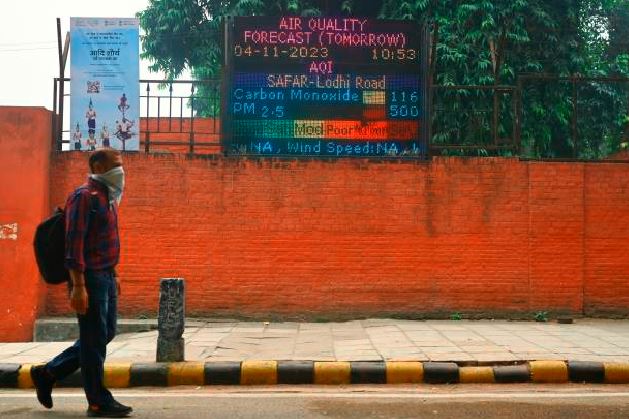The air quality in Delhi plummeted to severe levels on Friday, shrouding the city in a thick and harmful smog, which marked the beginning of an annual pollution crisis for India’s capital. The detrimental effects were immediately apparent, as schools were forced to close, and non-essential construction was banned to mitigate the dangerous conditions. The air quality index skyrocketed to 500, a staggering 100 times higher than the healthy limit set by the World Health Organisation (WHO).
The rapid decline in air quality over the past week was primarily attributed to the alarming increase in farmers in neighboring states, such as Haryana and Punjab, setting their fields ablaze during the crop planting season. Compounded by unfavorable winds that carried the pollutants into Delhi and a drop in temperatures that trapped harmful particles, the situation escalated rapidly.
Punjab, in particular, witnessed an alarming 740% surge in farm fires, with more than a thousand incidents recorded in a single day. Apart from agricultural practices, vehicular emissions, ongoing construction, and the incineration of waste at garbage sites also contributed significantly to the toxic air in the city.
Shockingly, the early warning systems designed to anticipate such environmental crises reportedly failed to predict the rapid deterioration in air quality that unfolded on Thursday, leaving authorities and citizens unprepared for the severity of the situation.
Delhi’s Perpetual Pollution Crisis

Delhi, home to over 33 million people, has consistently held the infamous title of one of the most polluted cities globally. The consequences are dire, as this year’s air quality life index, developed by the University of Chicago’s energy policy institute, suggests that the people of Delhi could have their lifespan shortened by as much as 11.9 years due to the perpetual inhalation of hazardous air.
Medical professionals in Delhi have already begun witnessing the adverse health impacts of the noxious environment. Dr. Nikhil Modi from Apollo Hospital in Delhi reported a surge in patients suffering from respiratory problems, coughs, colds, irritated eyes, and breathing difficulties across all age groups. “It is time for us to wear masks and venture out only when necessary,” he warned.
Despite the Aam Admi Party (AAP) )-led Delhi government’s claims of having an effective pollution action plan, the measures taken thus far have yielded limited results. Attempts such as road sprinkling to reduce dust and the installation of two 80-foot-high “smog towers” costing over $2 million each, aimed at purifying the air, have been primarily deemed ineffective by scientists. The desperate need for more substantial and sustainable interventions to combat Delhi’s annual pollution crisis remains a pressing concern for the city and its inhabitants.


Comments are closed.